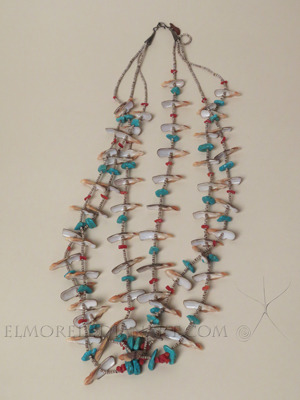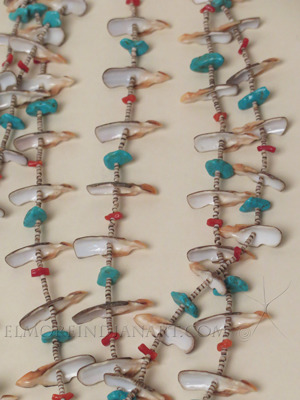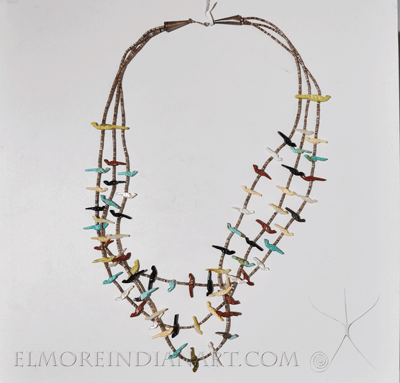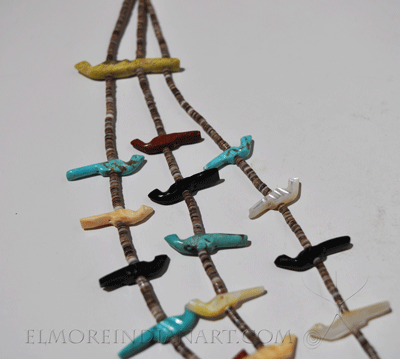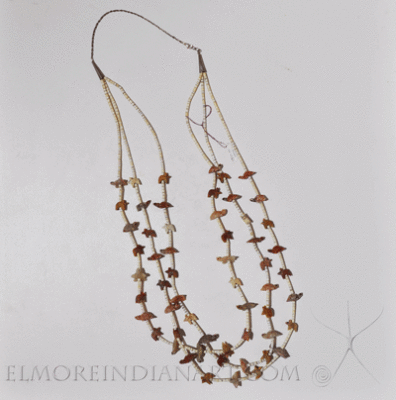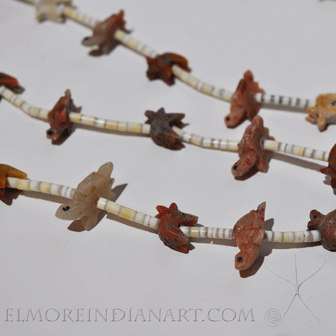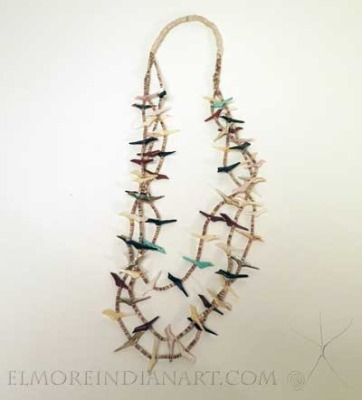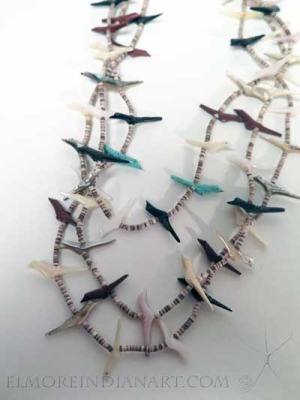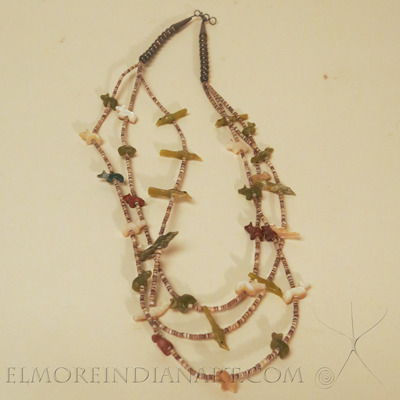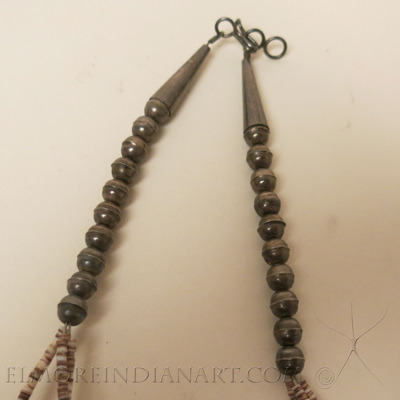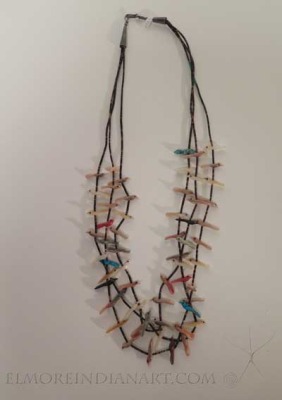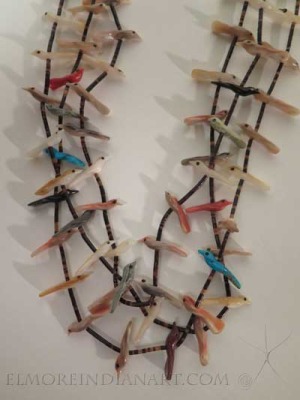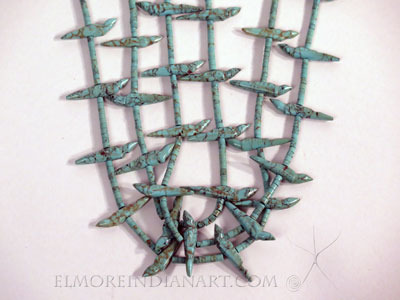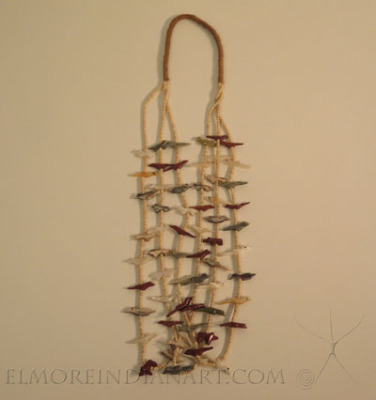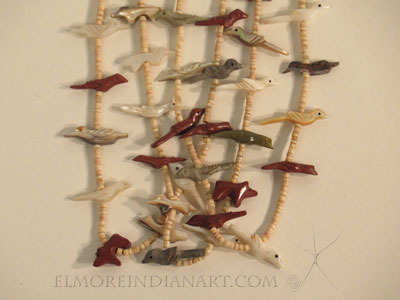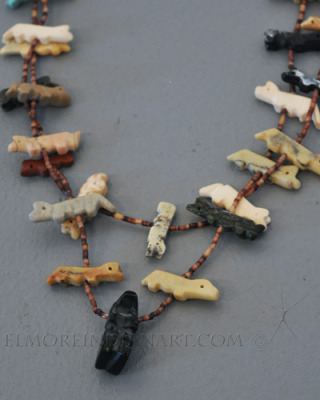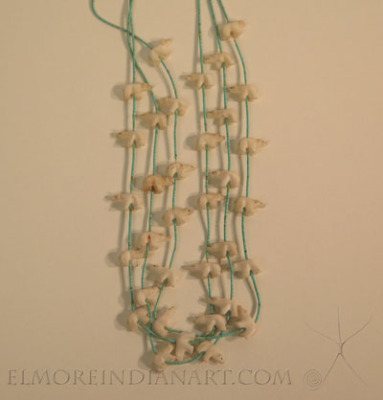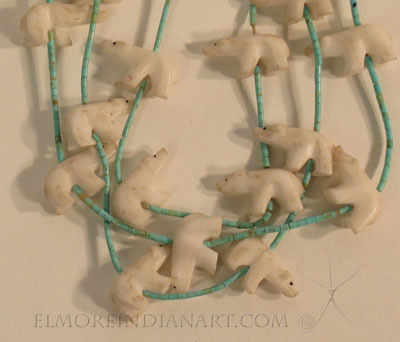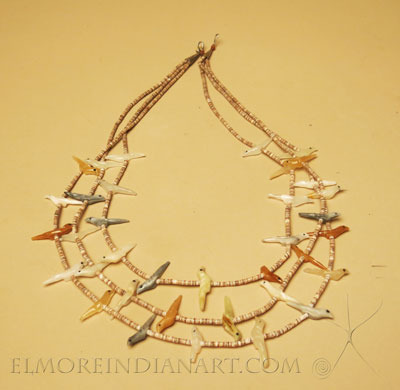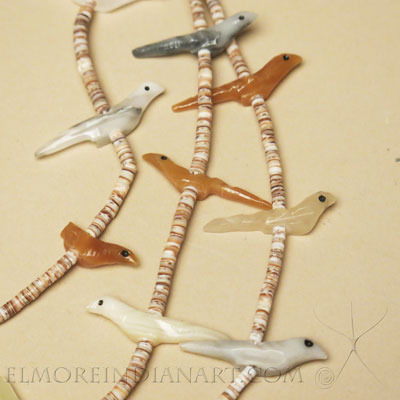Fetish Necklaces
Fetish Necklaces
Personal jewelry has been popular in the Southwest for hundreds of years. The archaeological record establishes that Zuni people have drilled and shaped strings of stones and shells for jewelry since at least 300 AD. As Native American jewelry became popular in the last century, Zuni artists still used ancient techniques: beads were hand-drilled and fetishes hand-carved. Modern jewelry styles, like the fetish necklace, reference their earlier turquoise pendant and shell necklace predecessors. Even shell was used in early Puebloan jewelry from trade routes from the Gulf of California. Although all Pueblos have a tradition of carving fetishes, Zuni have long been known to be the best carvers.
Zuni people have long used fetish carvings for religious and ceremonial purposes. Their use is traced back to a legend about when all animals were turned to stone by certain deities. All hunting fetishes are considered to be representations of these original animals. The power derived from these animals was meant to aid the hunter in his pursuit, and fetishes were carried in a pocket or worn around the neck. To the Zuni, each cardinal direction has an animal—North is the mountain lion, South is the wild cat, East is the wolf, West is the bear or coyote, Up is the eagle, and Down is the mole.
Until 1920, Zuni people primarily made jewelry for themselves or family members. However, by 1930, much Zuni jewelry was being made for tourists. Three men played a monumental role in this transition—the archaeologist FW Hodge, the trader CG Wallace, and the carver Leekya Deyuse. From 1917 to 1928, Frederick Webb Hodge excavated the old Zuni Pueblo of Hawikku, which was inhabited from 1300 AD to 1686 AD. Hodge’s crew consisted primarily of Zuni workmen, including the Zuni carver, Leekya Deyuse. In the excavation, they found many examples of turquoise jewelry, including fetishes and mosaic work. CG Wallace employed carvers and jewelers to produce jewelry for his trading post, and supported Leekya by gifting him with carving supplies, and purchasing his work for resale. Although Leekya and other carvers began to make fetish necklaces in the old style upon their discovery in the 1920s, they did not become popular until the 1930s. CG Wallace encouraged his carvers to carve mainly traditional animal shapes similar to the stone fetishes and pendants recovered by Zuni laborers excavating Hawikku and other historic and prehistoric sites. Wallace also encouraged his carvers by supplying grinding equipment, hand tools, and studio space. While the revival of the fetish art market began at Zuni, it was also practiced at other pueblos, including Santo Domingo and Cochiti, where it also became popular.
In the 1970s, the popularity of fetish necklaces increased with the general popularity of Native American jewelry. Navajo jewelers had begun to mimic Zuni work by this time, and the market became flooded with machine-made fetish necklaces from Italy, Mexico, and the Philippines. However, a true Zuni fetish necklace is recognizable by the excruciating detail of its carvings that cannot be copied. Zuni fetish necklaces are disappearing from the art market because they are handmade from bead to fetish, and are very labor-intensive to produce. From a carver’s perspective, the necklaces do not command high enough prices to justify the amount of work to create them. An authentic Zuni fetish necklace is an increasingly rare and special piece of authentic Southwestern Native American jewelry.
| Navajo & Pueblo Jewelry |
|
Belts and Buckles Bracelets Earrings Fetish Necklaces Necklaces & Bolo Ties Pins, Boxes, Spoons and More Rings |


